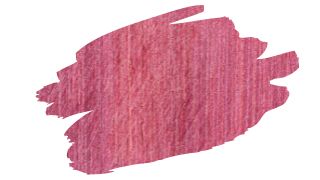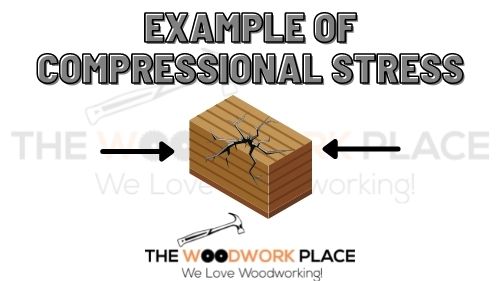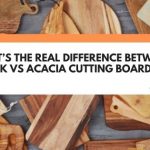Wouldn’t it be lovely to have a purpleheart cutting board gracing your home kitchen?
Purpleheart and Walnut cutting boards are particularly beautiful. Especially in the way that they contrast dark walnut brown against Purplehearts violet grain.
Still, when it comes to food prep, choosing cutting board wood is more about safety over style. Which is why the most important thing you need know about any wooden board, is if that timber is food safe.
Which is why, if you keep reading, we dive into whether or not Purpleheart is actually toxic…or if this tropical hardwood is something more ‘sensitive‘.
You will also learn what makes Purpleheart wood a surprisingly antibacterial surface. And we explain why Purplehearts tough exterior make it less than optimal cutting board material.

This post may contain affiliate links to products that we receive a commission for (at no additional cost to you). Learn more here.
What Can You Make With Purple Heart Wood?
This violet hued lumber can be made to make everything from furniture to floorboards. It has also been used to make outdoor decking and cabinets.
In fact, it is fast rising as an option for making guitar fretboards and other musical instruments.
Does Purple Heart Wood Stay Purple?
Not for very long. The mere light of day is enough to completely change the color of freshly cut purpleheart wood.
That is because the combination of air (oxygen), and light (ultraviolet rays), fast turn this brilliantly purple timber into a dark brown lumber. Purpleheart can even turn an ash-gray when used on outdoor decking and garden furniture.
Related Post: Beginners Guide To Finishing Purpleheart Wood
And What About Cutting Boards? Are Purpleheart Cutting Boards Really Antibacterial?
Well, arguably, all wooden surfaces are antibacterial, not just Purpleheart.
That is because of a little something called ‘hygroscopy’. This scientific term is given to materials that are incredibly good at absorbing water, moisture and vapour from the environment around them.
And wood is one such material. This naturally super-absorbent material can wick away at even very humid vapour lingering in the air.
Now, when it comes to woodworking, in general the hygroscopic nature of timber is a problem. That is because when wood absorbs water or moisture, it can warp, and even begin to rot.
However, when it comes to cutting boards, woods super-absorbency is a boon. That’s because wood will draw raw meat juices, and food liquids, away from the surface of that chopping block.
This cut offs the opportunity for any bacteria to multiply on the surface of a cutting board. That is why wooden cutting boards are more antibacterial than a rubber or plastic board.
And this, in turn, makes Purpleheart wood an antibacterial surface.
Related Post: Don’t Use Tung Oil On Your Cutting Board (Use This Instead)
But, Is Purple Heart Wood Itself Food Safe? Or Is It A Toxic Wood?
First off, Purpleheart is a sensitizer, but it is not a toxic timber.
As a sensitizer, raw Purpleheart wood can sometimes trigger allergic reactions. This is called ‘dermatitis‘, and it shows up as an itchy skin rash.
In some cases, if the sawdust of Purpleheart is inhaled, then this can cause asthmatic reactions and nausea.
In short, Purpleheart sawdust is nothing to sniff at (literally!). But, as long as you don’t ingest this timber, the risk of an allergic reaction is very low.
And, since this wood is so tough, you can be fairly certain that your chopping blows won’t chip bits of wood off Purpleheart either. Which is a very good thing, as none of those sensitizer wood chips will get into your food.
On the other hand, the strength of this wood poses a completely different problem as cutting board material.
Related Post: Edge Grain vs Face Grain Cutting Boards (Which Is Which?)
How Strong Is Purpleheart Wood? Is It Strong Enough To Be A Cutting Board?
Purple heart wood is very strong when it comes to it’s compressional strength.
Compressional strength relates to how many pounds of pressure wood can take, before it completely collapses.

We measure compressional strength of wood using the Janka Hardness Scale. And all wood has a Janka rating (somewhere along this scale). The higher the rating, the more pounds of force/pressure it takes to dent a piece of wood.
Now, Purpleheart wood has a tremendous Janka rating of 2520 lbf. Which means that it will take 2520 pounds of force (lbf) for your metal kitchen utensil to split this tough durable wood.
That’s A Good Thing Right? The Stronger The Cutting Board The Better?
Cutting boards, (at least ones used for regular food prep), have an optimal Janka hardness range.
They need to be hard enough not to easily splinter. However, they can’t be so hard that they blunt and damage your kitchen utensils.
This leaves us with a narrow optimal cutting board Janka hardness rating range of 900 lbf to 1500 lbf.
Which puts Purpleheart wood right out of the running as an optimal cutting board material.
So, Can You Use Purple Heart Wood For A Cutting Board?
Purpleheart wood cutting boards have a great aesthetic, and make for wonderful decorative chopping blocks.
But, for daily food prep (and for the longevity of your kitchen utensils), you should avoid using Purpleheart for your cutting board.
To Wrap Up, Here Are The 3 Key Takeaways From This Post…
- 1). Purpleheart wood is a durable lumber that’s often used for outdoor structures.
- 2). This wood is also a sensitizer, and can cause rare allergic reactions if it comes in direct contact with skin.
- 3). Purpleheart wood is very hard, (making it great for flooring). However, as a cutting board, it is so hard that it will end up damaging your expensive kitchen utensils.
References:
Mehta, Anisha J., and Barry N. Statham. “Allergic contact dermatitis to purpleheart and padauk wood (Pterocarpus dalbergiodes).” Contact dermatitis 56.4 (2007): 245-245.



